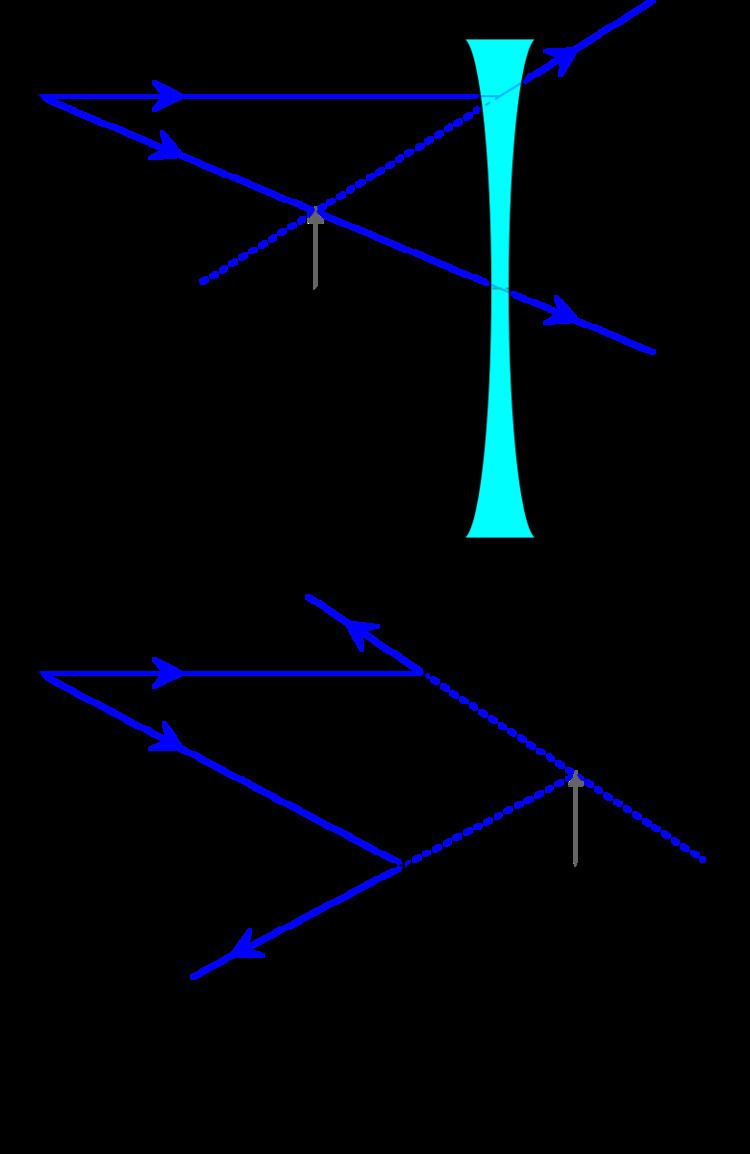In optics, a virtual image is an image formed when the outgoing rays from a point on an object always diverge. The image appears to be located at the point of apparent divergence. Because the rays never really converge, a virtual image cannot be projected onto a screen. In diagrams of optical systems, virtual rays are conventionally represented by dotted lines. Virtual images are located by tracing the real rays that emerge from an optical device (lens, mirror, or some combination) backward to a perceived point of origin.
In contrast, a real image is one that is formed when the outgoing rays forms a point converging at a real location. Real images can be projected onto a diffuse reflecting screen, but a screen is not necessary for the image to form.
A plane mirror forms a virtual image positioned behind the mirror. Although the rays of light seem to come from behind the mirror, light from the source only exists in front of the mirror. The image in a plane mirror is not magnified (that is, the image is the same size as the object) and appears to be as far behind the mirror as the object is in front of the mirror.A diverging lens (one that is thicker at the edges than the middle) or a convex mirror forms a virtual image. Such an image is reduced in size when compared to the original object. A converging lens (one that is thicker in the middle than at the edges) or a concave mirror is also capable of producing a virtual image if the object is within the focal length. Such an image will be magnified. In contrast, an object placed in front of a converging lens or concave mirror at a position beyond the focal length produces a real image. Such an image may be magnified or reduced depending on the position of the object.
